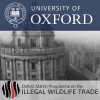Down to the bone: South Africa’s lion trade conundrum
Worldwide, wild populations of large felids are threatened by various factors, including harvesting for illegal wildlife trade. For certain species, such as the African lion, some legal harvesting and trade also takes place. Several African countries allow regulated commercial trophy hunting and South Africa allows the sale and export of lion body parts, notably lion bones, from captive-bred lions. Some believe that these continued commercial activities threaten wild lions, and even other felids, and must be banned altogether. Others disagree, warning that poorly conceived regulatory interventions can lead to accelerated uncontrollable illegal activity, as appears to have happened in cases involving other taxa.
At last year’s CITES Conference of Parties, South Africa agreed to establish a variable annual quota of lion skeleton exports, subject to ongoing monitoring of potential impacts on wild lion populations. Given that it provides a potential window into illegal markets, monitoring of this legal trade presents a unique opportunity for novel wildlife trade research. However, it also presents South Africa with a conundrum, following the confounding effects of a 2016 US ban on lion trophy imports that originate from captive-bred animals. This presentation will discuss these opportunities and challenges associated with this controversial wildlife trade issue.




